TVU RPS One Hardware Quick Start User Guide
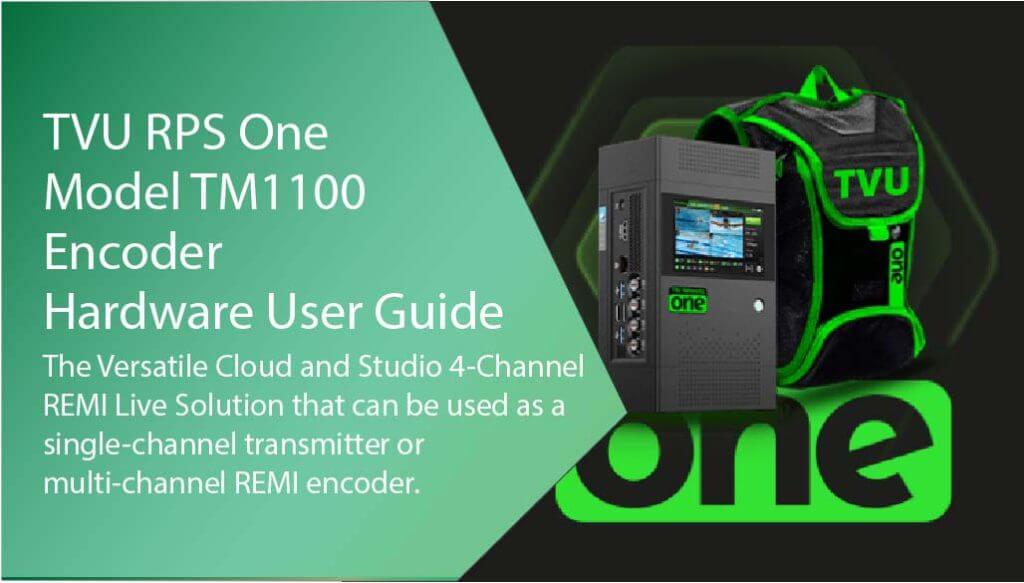
Introduction, setup, and base operation
TVU Networks Model TM1100 “One” and “RPS One” is the most compact, lightweight, and portable combination of 5G cellular transmission and multi-camera remote production transmitter.
Product overview
The RPS One features up to 12 connections and TVU’s enhanced next-generation Inverse Statmux Plus (ISX) transmission protocol technology.
With wireless connectivity, unparalleled transmission speeds, and superb multi-camera production performance, the TVU RPS One is the perfect addition to the already most powerful REMI and cloud-based production platform in the industry.
This wireless encoder supports up to 4 synchronized SDI inputs for 1080p HDR remote production and up to 4 hours of autonomy when paired with TVU POWERPAC for uninterrupted live production.
This solution supports 6 embedded worldwide 5G modems with LTE/3G fallback and aggregates up to 12 connections, including Starlink, WiFi, Ethernet, BGAN, and more. TVU RPS One supports up to 125 Mbps for unmatched Connectivity.
The TVU Networks RPS One hardware can be used with two software variations displaying different LCD console interfaces. The One (single-channel transmitter) or the RPS One (multi-channel REMI encoder), as shown below.
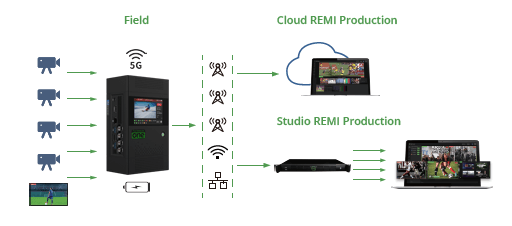
TVU Cloud and receiver compatibility
Current RPS One 4-channel receiver options:
- Transceiver (Quad, dual, and single) 2x DualR, 1x QuadR
- Cloud (TVU Producer, TVU Channel, MediaMind, and CloudR
The RPS One model TM1100 includes an onboard, removable Li-Ion battery for unlimited runtime to give you more time for going live, recording, or transferring files.
About this user guide
This user guide provides detailed information about the following topics:
- RPS One encoder components overview
- Setting up the RPS One encoder
- Charging the battery
- Turning off the RPS One
- Backpack and battery configurations
- Product specifications
Related literature
- TVU RPS Data Sheet
- TVU RPS One Software Quick Start User Guide
- TVU RPS One Advanced Configuration Guide
- POWERPAC Quick Start User Guide
- TVU Battery Safety and Travel Guidelines
Notices and guidelines
Read and follow the notes and guidelines in this document before you use your TVU RPS One encoder:
NOTE: These notices provide important tips, guidance, or advice.
Before you begin
Before you begin setting up the RPS One encoder, it is recommended that you identify the devices you intend to use with the unit, including cameras, cables, power sources, modems, TVU services, and unit accessories.
The One/RPS One Software version 8.1 (Build 81349) or later uses the same hardware, which features two LCD console interfaces:
- The One single-channel transmitter
- TVU RPS One multi-channel encoder
Refer to the latest TVU RPS One software user guide for operational information.
RPS One encoder components
The RPS One encoder comprises the internal battery and embedded modems. Weighing just 3.9 lb. (1.79 kg), the encoder fits easily in the average person’s hand.
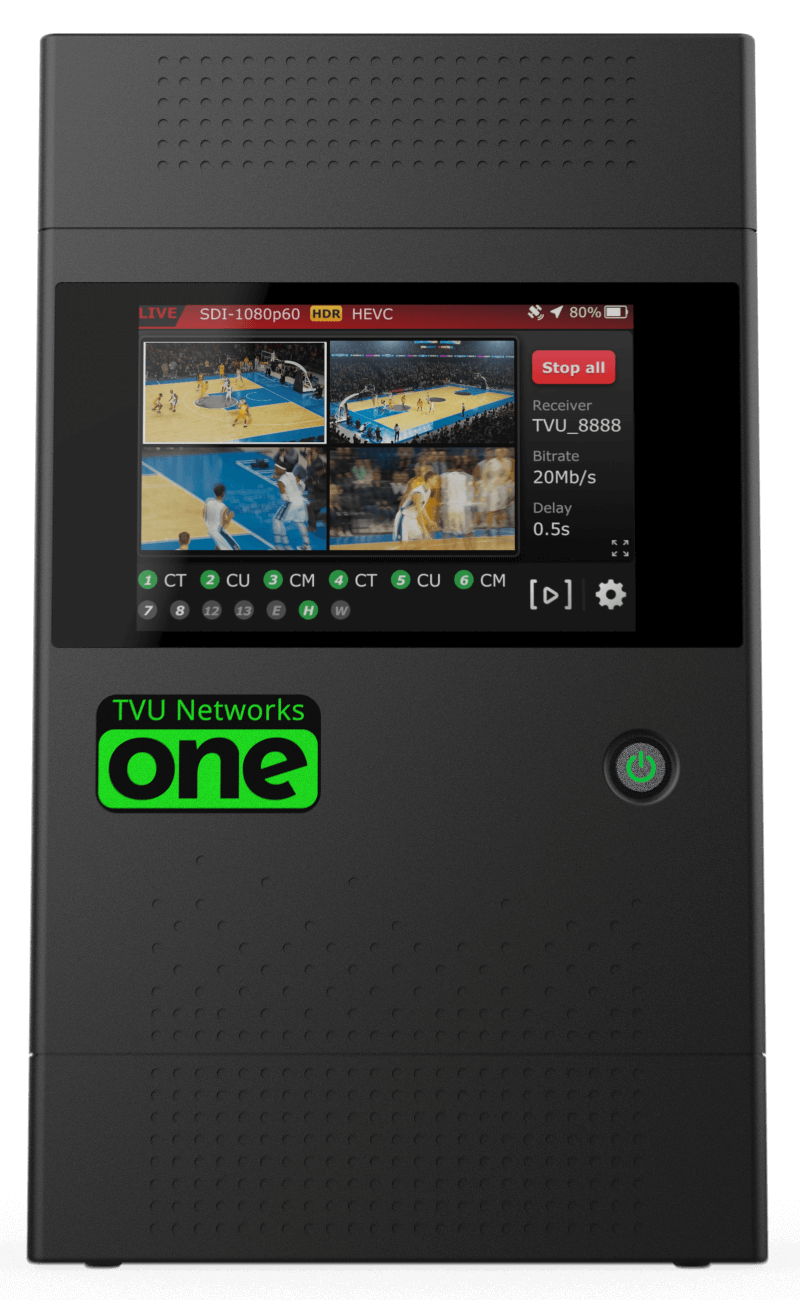
RPS One standard components
Standard components for the RPS One model TM1100 encoder include the following:
- TVU encoder with up to 4x 1080p inputs, or HDMI input
- 1x micro Internal SD slot
- 1x Micro SD card (128 GB) Type 10
- External USB connections (4x)
- Ethernet port
- IFB port
- Power supply (AC Adapter)
- TVU RPS One breathable backpack
RPS One controls and operations
The RPS One is the central component of the RPS One system. The RPS One handles video capturing, video encoding and transmission, modem management and dialing, and system status monitoring.
Front panel LCD touchscreen display and power indicator
Press the power button on the front panel to turn on the RPS One. The button turns green when the unit is powered on. The LCD touchscreen displays configuration and status information for connected modems, including video input and transmission. When a video input is connected, an input preview is displayed on the LCD touchscreen.
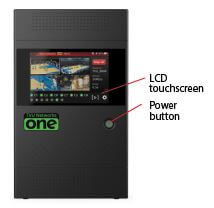
RPS One side panel overviews
The TVU RPS One encoder left-side and right-side panels feature the following input/output connections and controls.
Note: The One and RPS One share the same hardware. Changing a license upgrade from single channel to multichannel is available. Please contact your sales representative for more information.
TVU RPS One encoder left-side panel
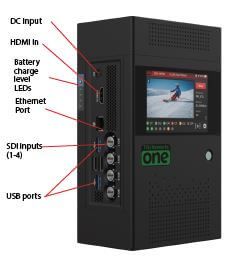
TVU RPS One right-side panel
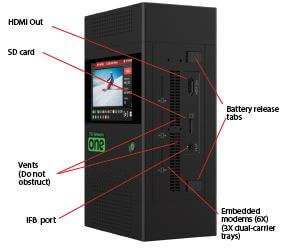
Setting up the RPS One
This section explains the encoder connections, detaching and charging the battery, how to remove and replace SIM cards, and backpack battery configurations.
Encoder connections
Complete the applicable steps to set up the RPS One encoder:
- Connect the HDMI cable or connect the SDI cables to the SDI 1 input port for a single channel. Multi-channel support is enabled with RPS One licensing features.
- Connect the Ethernet input cable to the Ethernet port for a LAN connection if available.
- Connect your power to the DC Input port.
- Connect the IFB device (3.5 mm mini audio output jack) to the IFB output port.
Detaching the internal battery from the encoder
The encoder’s internal battery is designed to fit within the unit and can be easily removed. Complete battery power management for the RPS One encoder is available on the LCD touchscreen and the receiver interface.
Complete the following steps to detach the internal battery from the encoder:
- Users will find two spring-loaded latches on the side of the encoder opposite the LCD touchscreen.
- Orient the encoder LCD touchscreen down and push down on the latches to release the battery and slide it away from the encoder.
Battery release latches
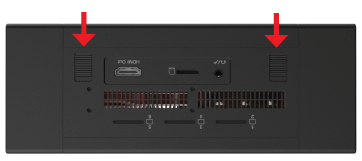
Charging the internal battery
To charge the internal battery without removing it from the encoder, connect the provided AC power adapter to the DC input on the unit and plug the other end of the adapter into an electrical outlet. The battery will then begin to charge. When the encoder is turned off, the battery will charge significantly faster (in approximately 3 hours).
The TVU RPS One comes with an AC adapter. To charge the TVU RPS One, connect the AC adapter as shown.
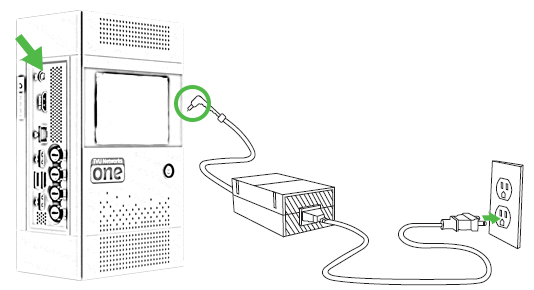
Power button status when charging
The TVU RPS One displays the following power button status when the AC adapter is properly connected and the battery is charging:
- The power button displays a steady green light when the unit is powered on and charging.
- The power button light is off when the battery is charging, and the unit is off. The LCD touchscreen displays the battery charging percentage.
- The power button light is off when the battery is not charged or connected to the unit.
Note: An optional external TVU POWERPAC Li-Ion battery can extend the internal battery runtime. Refer to “RPS One backpack and battery mounting configurations” for more information.
TVU POWERPAC Li-Ion batteries
The TVU POWERPAC Li-Ion battery mounts to the v-mount, g-mount, or gold-mount plates inside the backpack to extend the battery life of the transmitter while in the field.
The TVU POWERPAC 2 Li-Ion battery mounts to the v-mount plate inside the backpack to charge and extend the onboard battery life of the transmitter while in the field. The POWERPAC 2 can power your accessories and transmitter simultaneously with the integrated USB C, USB micro, and USB type A interface.

For more information refer to the POWERPAC Quick Start User Guide.
Inserting SIM cards
The encoder SIM card slots are designed to hold up to 6 Nano SIM (4ff) cards in three SIM trays. These SIM configurations are user serviceable.
Note: The encoder’s SIM card trays only accept Nano SIM (4ff) cards.
Complete the following steps to insert a SIM card into the embedded modem slot on the encoder:
Note: The unit must be powered down before inserting a SIM.
- The RPS One model TM1100 features three dual SIM card trays for use with the internal modems. To remove a SIM card tray, gently push the end of the SIM tool into the round opening next to the SIM card tray until it clicks and slightly pops out. Carefully pull the dual SIM tray out of the slot.
- Place 2 SIM cards into the dual nano SIM card tray as shown below and carefully slide the carrier into the embedded modem slot. Ensure the SIM cards stay in their respective carrier recesses during this process.

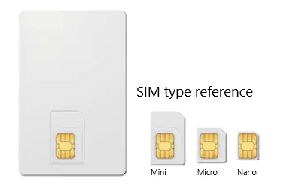
Turning off the TVU RPS One
To turn off the TVU RPS One, complete the following steps:
- Press the power button once. A sliding button will display on the LCD touchscreen.
- Slide the button from left to right to power down the unit.
RPS One backpack and battery mounting configurations
The RPS One encoder is designed to transmit from a wearable backpack. The backpack comfortably holds the pack, allowing users easy access to the power button and connections.
The touchscreen LCD interface on the pack can also be used while the unit is in the backpack. In addition, the backpack features breathable mesh that allows for the essential ventilation of the encoder to prevent overheating.
There are three TVU RPS One backpack external battery mounting configurations:
- V-type mounting configuration
- G-type mounting configuration
- Gold-mount configuration
TVU RPS One and backpack
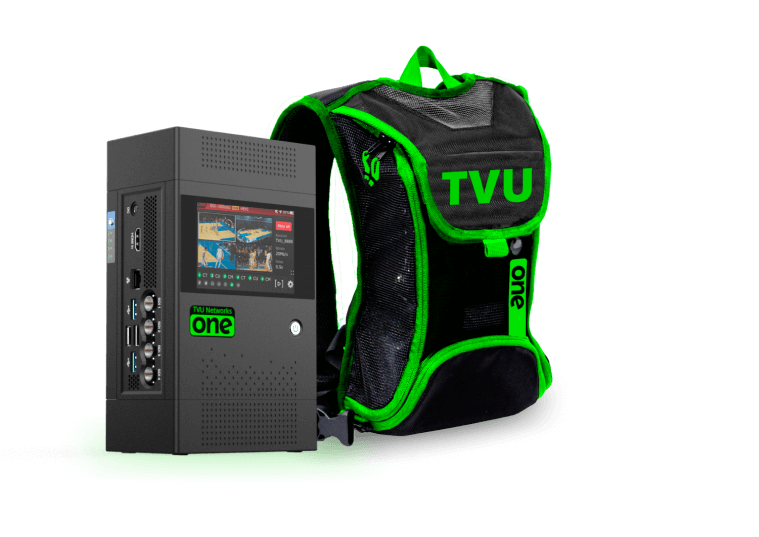
V-type mounting plate configuration:
V-type mounting plate configuration:
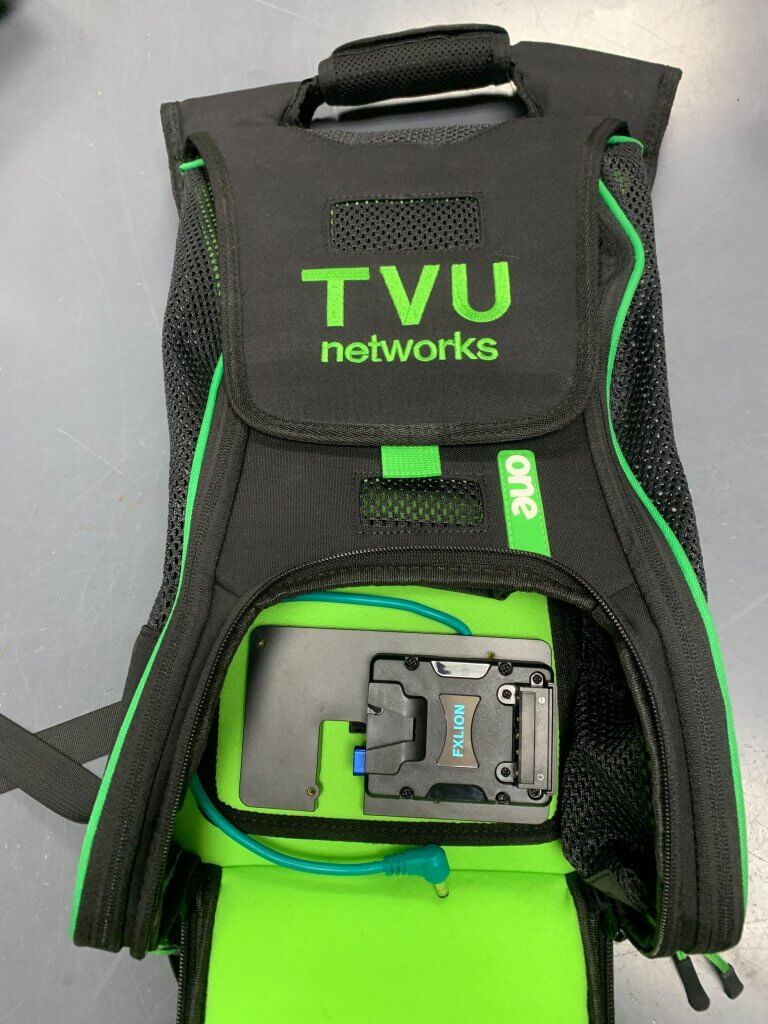
V-type mounting plate and backpack detail:
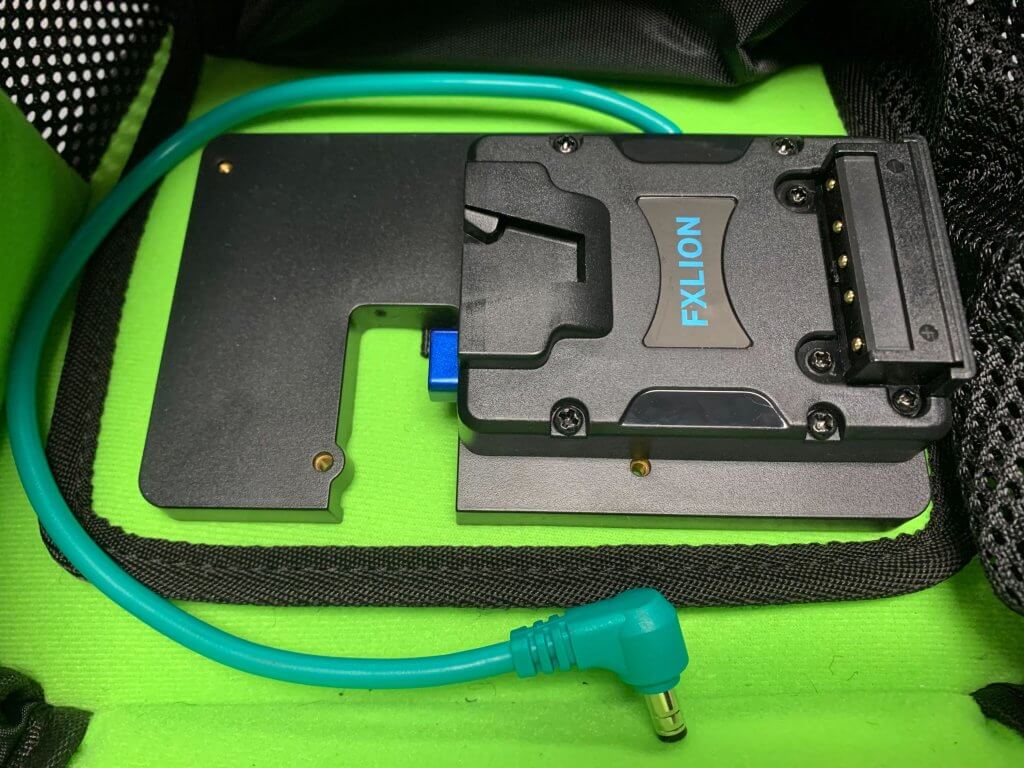
V-type POWERPAC battery:
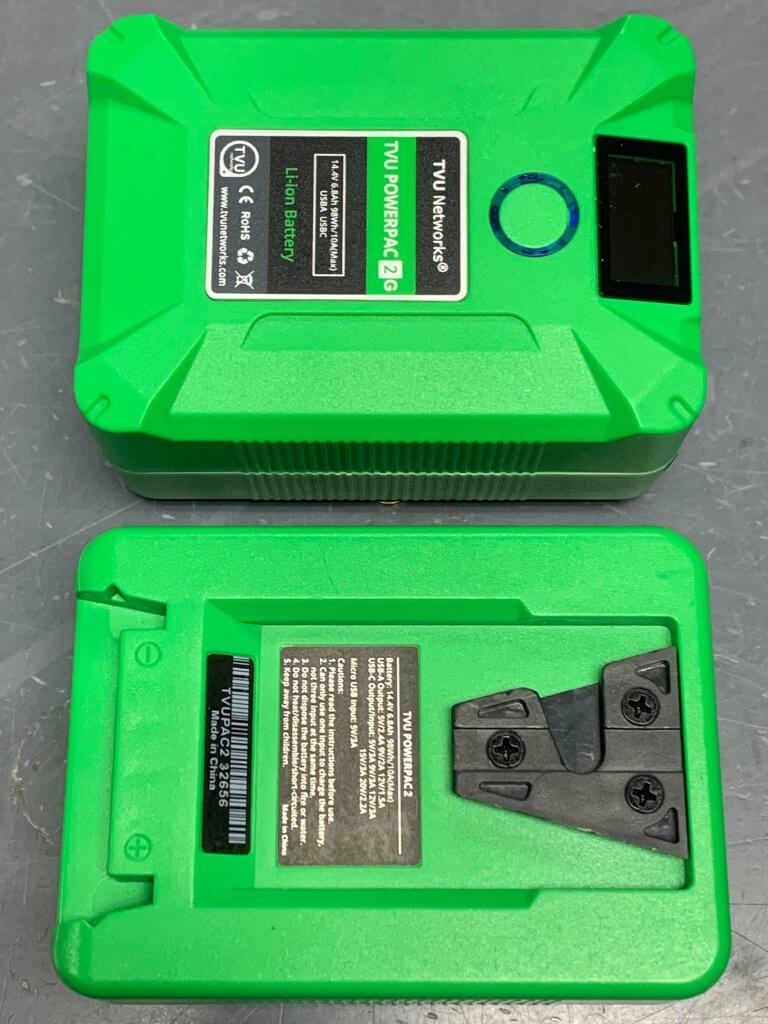
Gold-mount configuration:
Gold-mount plate configuration:
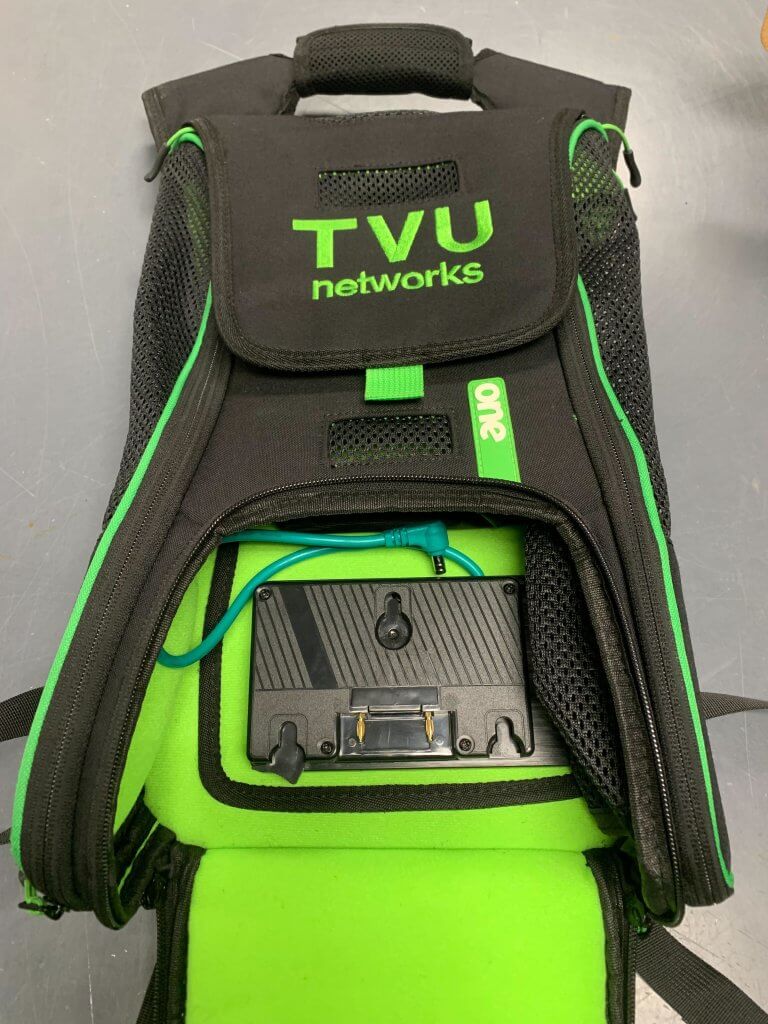
Gold-mount plate and backpack detail:
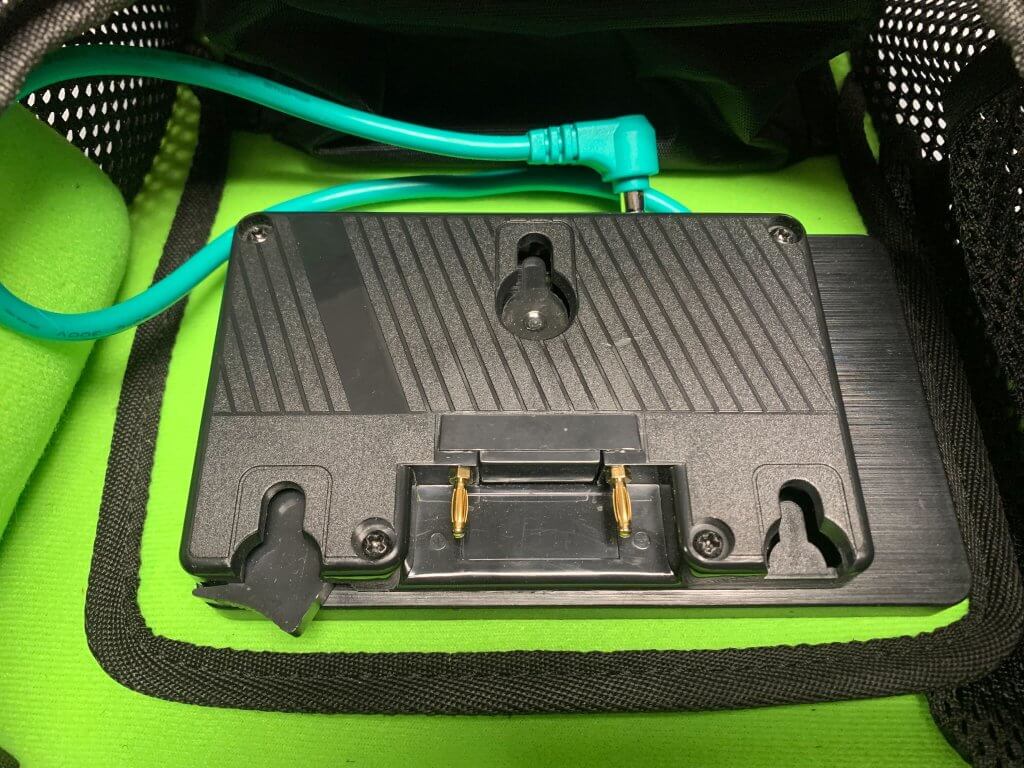
Gold-mount plate and POWERPAC battery:
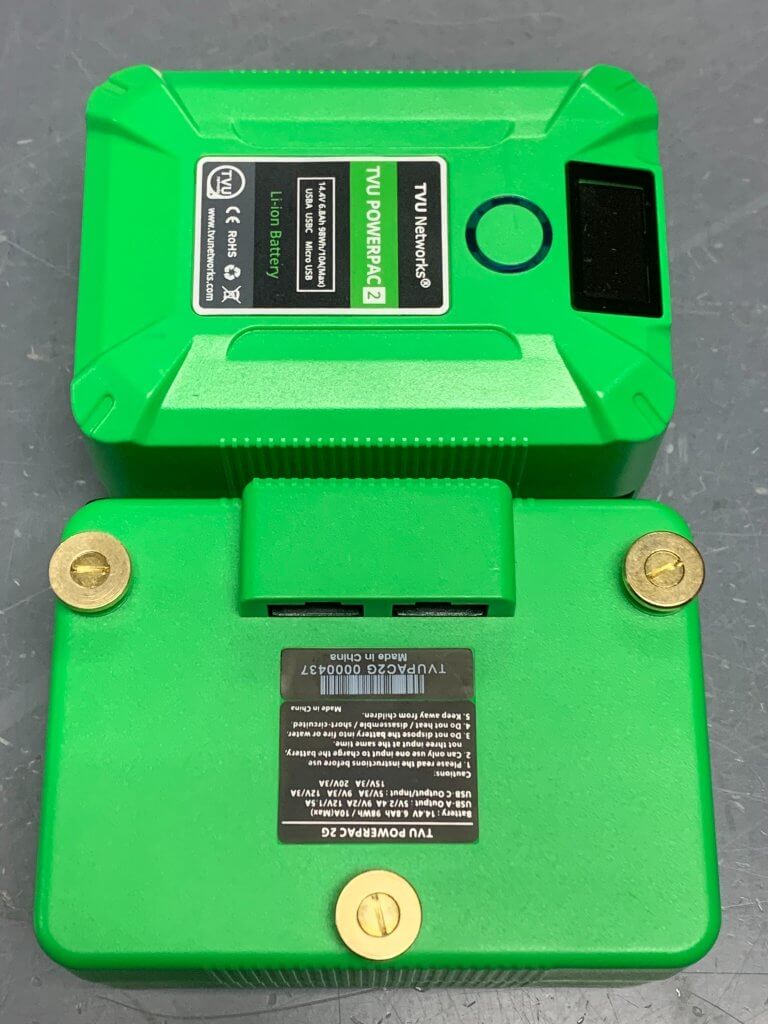
Non-proprietary battery and mounting plates:
There are two non-proprietary backpack external battery and mounting plate configurations:
- V-type battery and mounting configuration
- G-type battery and mounting configuration
Non-proprietary V-type battery and mounting plate:
V-type battery and mounting plate backpack configuration:
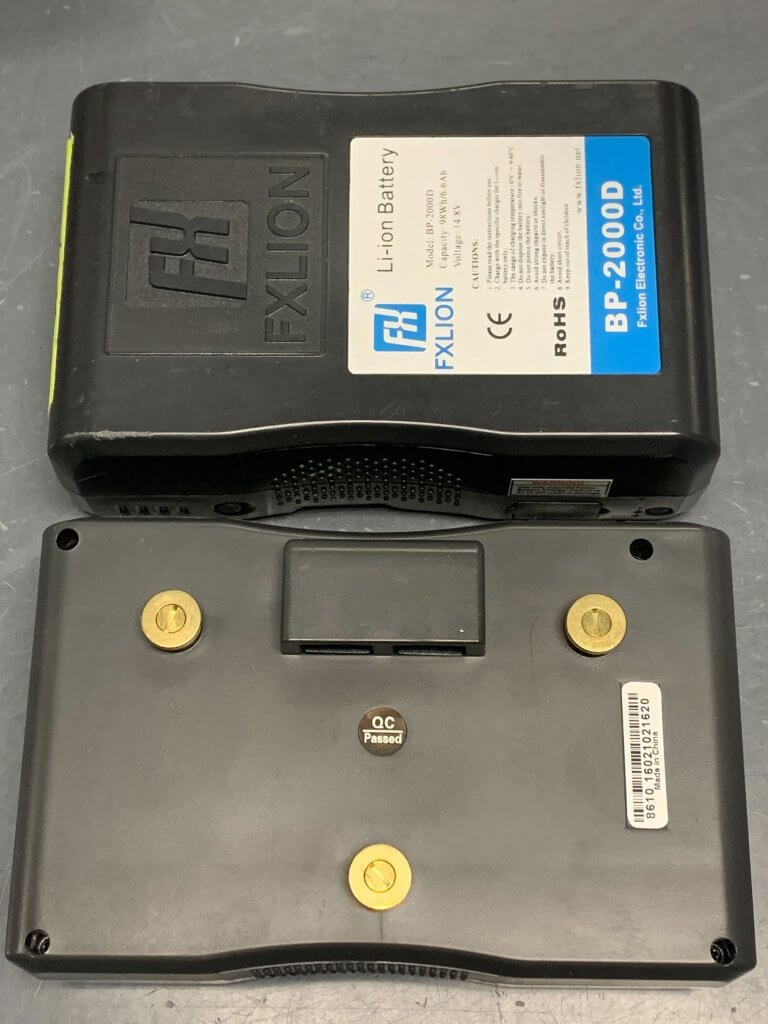
Non-proprietary G-type battery and mounting plate:
G-type battery and mounting plate:
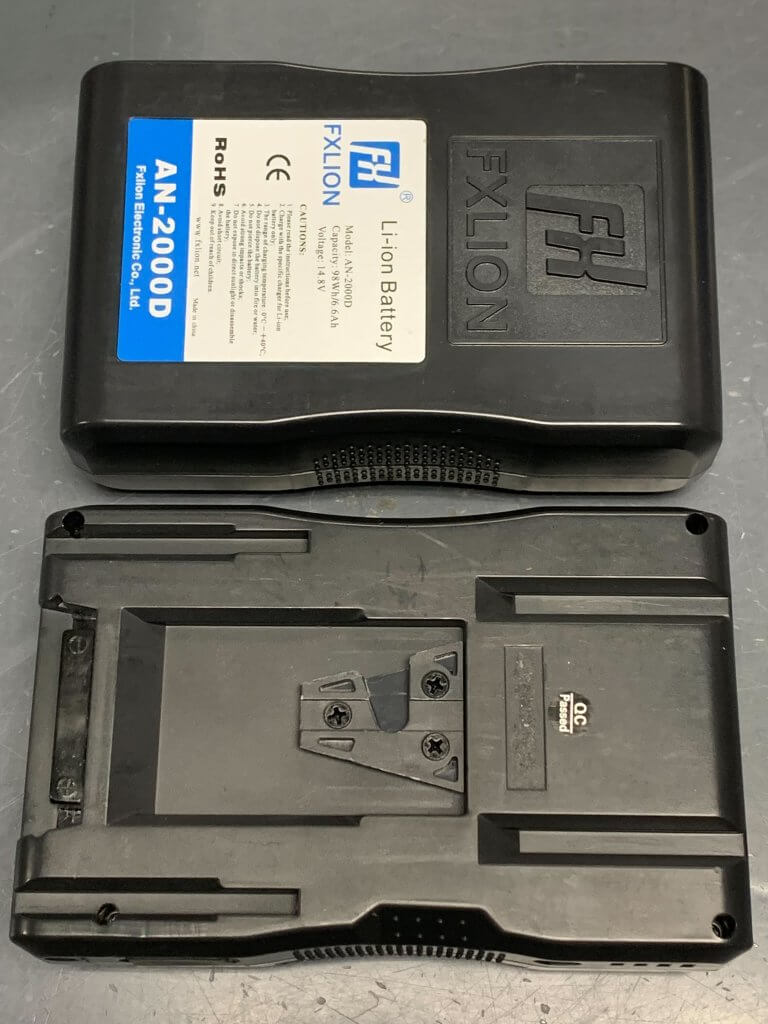
Product specifications – Model TM1100 encoder
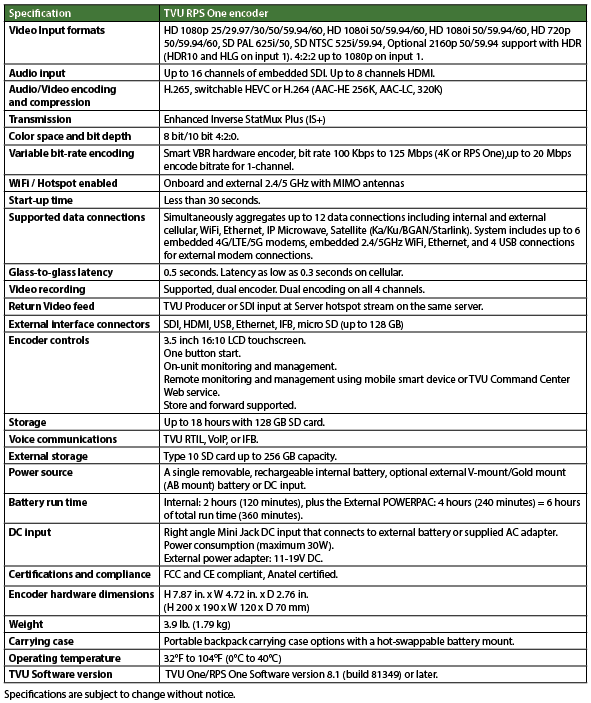
© Copyright 2025 TVU Networks Corporation. All rights reserved in all media.
Document Part Number: TVU RPS One HW QSUG Rev D EN 02-2025